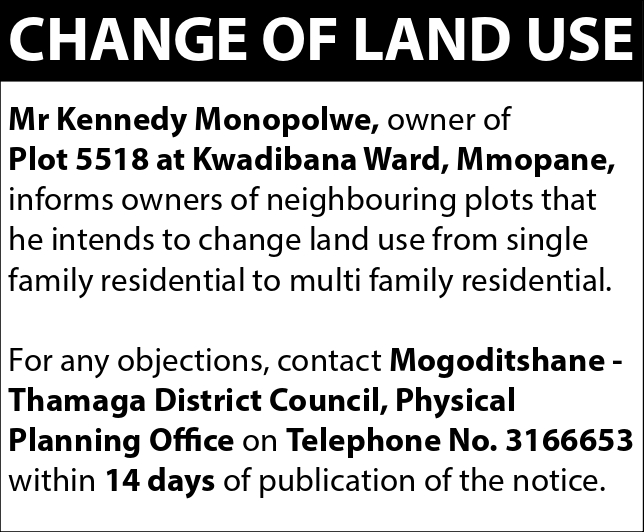- Dominates total commercial banks credit
GAZETTE REPORTER
Credit to households continued to dominate total commercial banks debt as it stood at P43.3 billion in March 2021, a report by the Financial Stability Council stipulates.
According to the Financial Stability Council in their May 2021 Financial Stability Report (FSR), with the P43.3 billion figure, the household credit grew by 6.3 percent in the twelve months to March 2021 , lower than the 15.1 percent growth in March 2020. The FSR is compiled by the Bank of Botswana (BoB) in collaboration with the Ministry of Finance and Economic Development (MFED), Non-Bank Financial Institutions Regulatory Authority (NBFIRA) and Financial Intelligence Agency (FIA).
“Credit to households continued to dominate total commercial banks credit, at P43.3 billion in March 2021,” the report reads. “This was mostly concentrated in unsecured lending (71.8 percent). The proportion of unsecured loans to total credit remains higher
than the 24.4 percent and 35.4 percent reported in South Africa and Mauritius respectively. The significant share of unsecured loans and advances has the potential to cause financial distress for households, given the inherently expensive and short-term nature of such credit. Therefore households remain vulnerable to sudden and sharp tightening of financial conditions.”
Meanwhile the report by BoB, MFED, NBFIRA and FIA shows that household debt proportion of household income was 3.75 percent in the fourth quarter of 2020, a decrease of 44.7 percent in the same period in 2019. “The ration remains relatively low when compared to the 78.7 percent and 72.7 percent for Namibia and South Africa respectively.
In this respect domestic household borrowing is in line with trends in personal incomes, implying a relatively strong debt servicing capacity. Consequently, the ratio of household NPLs to total household credit was modest, at a 3.5 percent in March 2021, slightly lower than the 3.6 percent in March 2020 and way better than the industry average of 4.4 percent in March 2021.”
Even so, the FSR notes that the 2020 Household Indebtedness Survey indicates that the of majority credit providers expected moderate to high demand of credit in 2020 as a result of progressive reductions in the Bank Rate and the increase in salaries of public sector employees. “However, the survey also indicated that that the demand for credit was negatively affected by the loss of incomes and possible losses of employment due to the COVID-19 pandemic. Overall, the results of the survey suggested minimal risks to financial stability posed by the level of household indebtedness.”




